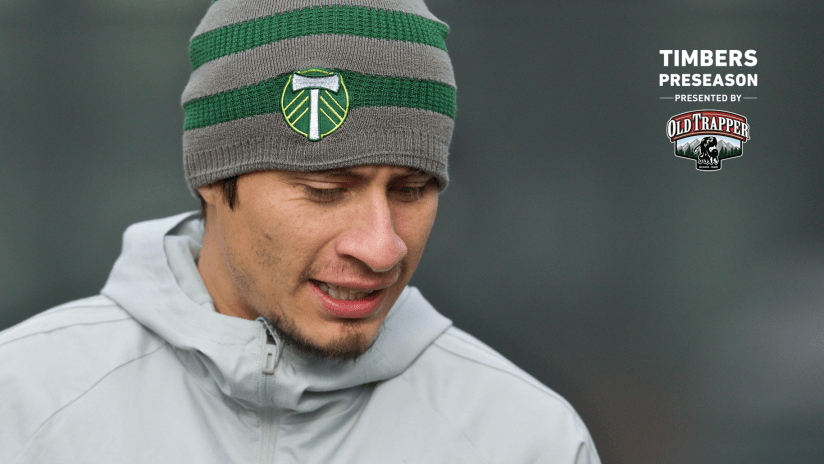BEAVERTON, Ore. – If the first two days of Portland Timbers preseason training are any indication, a consideration which, in the abstract, looked like a potential negative may actually be a positive.
The truncated offseason the team earned by making it to the MLS Cup final? One that saw Giovanni Savarese’s group play into the second week of December? That may have given the Timbers less time to recharge this offseason, but as early, active sessions of preseason have shown, it also meant less time for players’ fitness levels to drop.
“Actually, it does help,” left back Jorge Villafaña said, of the team’s short break, “because you don’t lose that much fitness, and you already have a base.”
That benefit has been evident over the first three hours’ training this week, where Portland’s level of ball work and intensity are more akin to the second or third weeks of preseason than the ramping up you normally see after a prolonged layoff. While the team is still working toward full match fitness -- and the drills the coaches have chosen seem to have that fitness in mind -- the technical demands of Portland’s 90-minute sessions have not been entirely different than what you’d encounter in the regular season.
For Portland’s peers, the course may be different. Major League Soccer doesn’t have one, set cut-off time for its season, with teams’ campaigns ending as they’re eliminated from playoff and title contention. For 11 of the league’s 23 teams, last season, that meant cleaning out lockers on October 28 – the last day of the regular season. If you were Portland or Atlanta United FC, though, and made it to the season’s final game, the playoffs shaved 41 days from your offseason.
“Right now, I think the guys are good,” Villafaña explained, referring to the team’s fitness. “Everything is going well. We are at the start of 2019 and getting ready.”
Villafaña has a slightly different perspective than most on the length Major League Soccer’s offseasons, a topic that has occupied the league’s zeitgeist for years. The height of the debate came during Jurgen Klinsmann’s time as head coach and technical director of the United States men’s national team, with the former Germany international concerned about the length of the league’s offseasons.
When Villafaña emerged into a regular role with Chivas USA, his first MLS team, that debate was at its apex. By the time he left the Portland Timbers for Liga MX’s Santos Laguna in 2016, though, MLS was starting to stretch its final games deeper into the calendar.
Even then, though, the breaks Villafaña was afford with Chivas USA and the Timbers were virtual. Eons compared to Liga MX’s miniscule reprieves.
“I was talking about that with some of the guys,” the U.S. international said. “I’ve been used to the short offseason when I went to Mexico, too. It was like three weeks,” as Liga MX alternated between its Aperturas and Clausuras.
“The offseason that we had,” for the Timbers, Villafaña said, “it went by fast, but it’s a month-and-a-half.” From early December to late January, the 29-year-old had nearly double the time he was afforded in Torreón.
“It’s a great (amount of) time, because it’s a long season,” he said, “so you need time to recharge. For teams that don’t go to playoffs, it’s a bit longer, but it is what it is. You have to adapt to it.”
Eleven months from now, though, players will have to adapt to yet another reality, one reminiscent of the days before the league started pushing MLS Cup into December. In an effort to finish its campaign before November’s FIFA-mandated break, MLS will complete its new season on November 10, holding its next MLS Cup final nearly one month earlier that it did in 2018.
“I think it does help …,” Villafaña said of the change, alluding to one problem he sees as solved. “You have the long break from the FIFA date, where you have to wait, in the playoffs. And that makes [the season] even longer. Cutting that before the FIFA date, I think it’s going to help …
“I think it’s better, and finishing before the holidays is even better.”












